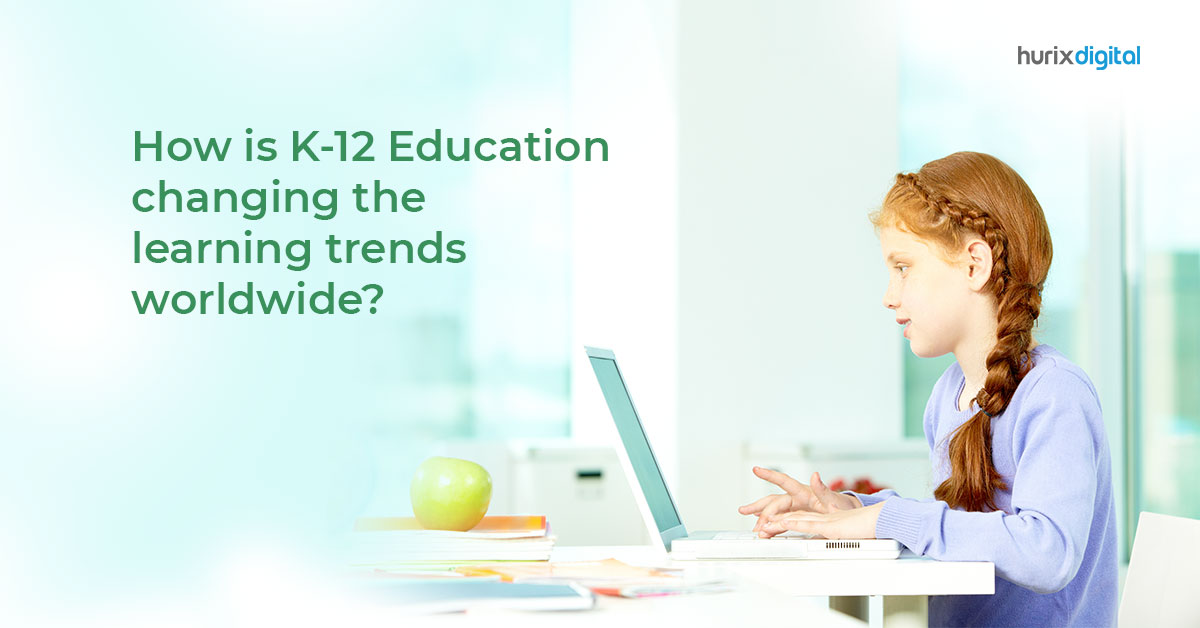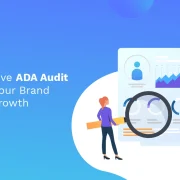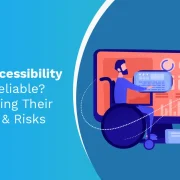
How is K-12 Education Changing The Learning Trends Worldwide?
While technology has been making its way into every aspect of our lives, it has had a particularly major impact on the education sector over the past two years. The global COVID-19 crisis has resulted in technology being rapidly adopted to ensure educational continuity, with improvements being made every single day.
When considering K-12 education in particular, the changes have paved the way for how learning is provided and consumed in more ways than one. As a result, the online K-12 education sector is projected to grow to $12,930 million by 2028.
This guide will dive into six major ways K-12 education has shaped learning trends worldwide.
6 Ways K-12 Education Has Shaped Learning Trends
From the increased use of augmented reality to creating an interactive learning environment, there are different ways in which K-12 education is shaping learning trends in several ways. These are explained in greater detail below.
1. The Increased Use of Interactive Video Content
One of the key challenges that the sudden shift to online learning presented was ensuring a level of engagement on par with that of being in a physical classroom. Further, using technology as the primary learning medium proved challenging for teachers and students.
However, with time, educational platforms have paid a great deal of emphasis to using video content to make concepts easier to grasp while also making them more engaging for the students. In fact, 45% of elementary school students considered video content among their favorite learning methods.
This shows the immense potential of increasingly adopting video content in learning solutions.
2. Greater Access to Education Via Mobile Devices
With students learning from home for over two years, schools and institutes worldwide have worked to ensure students can access their learning material via any device whatsoever. This includes mobile devices and tablets.
This wide compatibility has gone a long way in ensuring students aren’t deprived of learning due to limitations caused by their own devices. This is of immense importance, considering spending across products reduced significantly during the heat of the pandemic.
Also, with smartphone purchases increasing worldwide, many students are bound to reap the benefits of this greater accessibility.
3. An Increasingly Personalized Learning Experience
One of the primary advantages of the changes in the K-12 education system in recent years is that they have made the learning experience far more personalized. This is a crucial aspect of the digitization of learning as it considers each student’s different learning capabilities.
This approach helps teachers understand individual students’ weaknesses, strengths, and potential areas of improvement. It can help them create a more personalized approach as a part of their curriculum development process while also involving technology to make it future-proof.
However, with the influx of technology, all these aspects are taken care of by Artificial Intelligence, as the software provides students with feedback and any required course correction. Further, the use of technology also allows students to pick up right where they left off, thereby giving them the space and time required to understand concepts better and be on par with their peers.
Such an individualized approach to learning can also lead to significantly better outcomes in terms of academic performance.
4. The Introduction of a Hybrid Learning System
While education largely moved online during the pandemic, it goes without saying that this poses several challenges for students who need access to the technology required or those who tend to learn better in a more collaborative environment.
The benefit of hybrid learning is that it offers a classroom-like experience to students, allowing them to collaborate with their peers in real-time while also participating in group discussions, quizzes, and other activities.
Hybrid learning also presents a rather lucrative opportunity for schools, as it significantly reduces the costs involved in getting students to study in a physical building. Moreover, with several logistics out of the way, schools can invest more money in making the learning experience more intuitive and personalized.
5. Greater Gamification Leading to Improved Outcomes
Technology in the education sector has reached a point where courses are no longer just digitized versions of good old textbooks. It has made it a lot more engaging and interactive, primarily due to the gamification of education.
Gamification refers to the process of blending gaming with learning and is set to be among the biggest trends in the years to come. Games have proved to be a great way to help students solve complex problems in a game, offering them a different approach to understanding concepts rather than traditional rote learning.
Other than the improved engagement levels and problem-solving abilities, gamification also improves attention spans and students’ abilities to retain information. This is because the game-like approach to learning engages them far more than reading a concept, motivating them to solve a problem rather than giving up too soon.
6. Ensuring the Professional Development of Teachers
One of the biggest advantages of the increased role of technology and the internet in learning is that it helps teachers keep themselves updated with the latest technologies and techniques. This motivates them to try and potentially implement these to improve students’ understanding of concepts and their overall academic performance.
Further, it helps teachers remain updated with the latest information in their subject of expertise, which is often unlikely when relying on a textbook with limited information.
Education institutes must realize these benefits and do their bit to ensure the professional development of their teachers. Given below are a few ways to do so.
- Offer regular training sessions that allow teachers to leverage the tools at their disposal to improve students’ overall learning experience.
- Conducting routine tests to ensure teachers display the highest standards.
- Hiring the personnel required to ensure a seamless transition to a fully digital learning environment, along with those required to troubleshoot any issues with the technology itself.
In Conclusion
With the rapid transformation of the ed-tech industry, students are bound to benefit from the increased use of technology. However, this depends on how schools adopt this technology and train their teachers to leverage it fully.
Interactive video-based learning solutions are specifically created for K-12 students, simplifying and supplementing the learning process in ways traditional learning can’t compete. With the right tools that make the most of the technological advancements in the education sector, both students and teachers are set to benefit greatly.
Hurix Digital’s K-12 content solutions leverage these technologies to ensure an intuitive, personalized, and engaging learning experience that greatly benefits students. Reach out to learn more.
Also Read:
- 5 Benefits of K-12 Education in The 21st Century
- Why does K-12 Education Dominate Learning Trends?
- The Reach of K-12 Education in the Next 5 Years

Performance, Results, Growth, and Life-Long Learning define my professional life. I am passionate about making workplace learning planful, purposeful, and impactful. I take pride in partnering with clients and bringing them the best in learning design and creating solutions that address business challenges.




